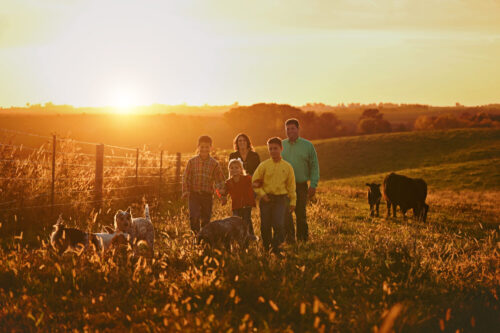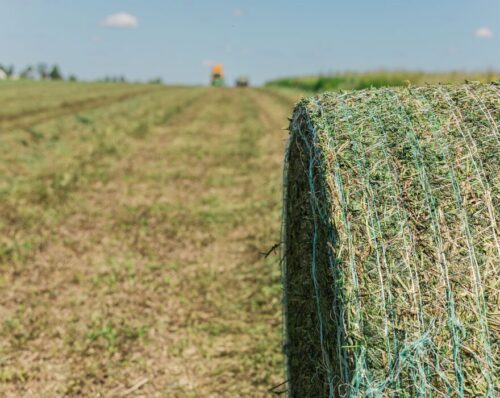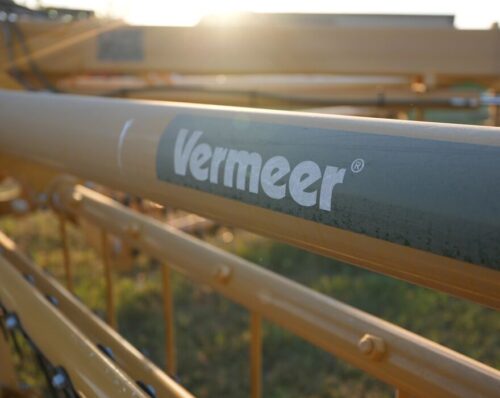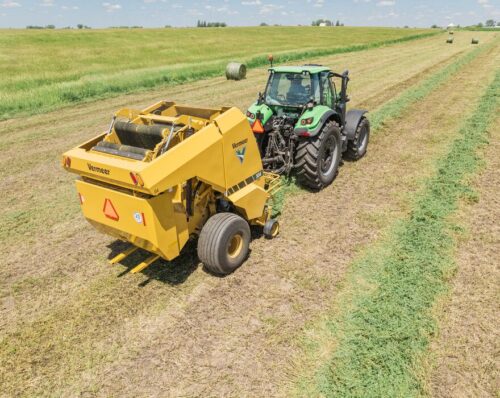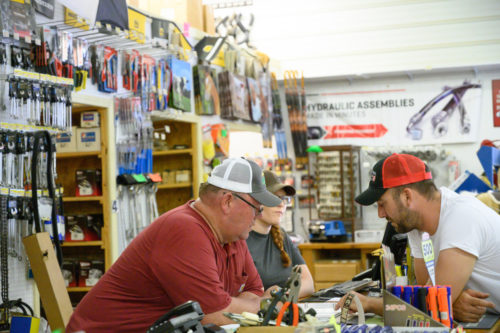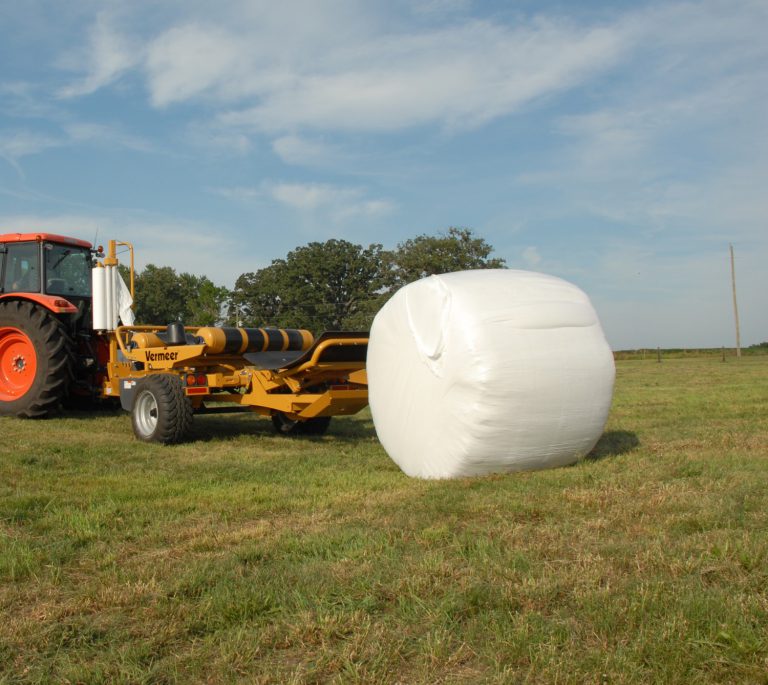
The Baleage Advantage (Over Dry Hay)
June 2015
FACT: Forage is at its highest quality when it’s cut.
FACT: Waiting for it to dry will negatively impact forage quality.
FACT: The extra cost required to bale high-moisture hay (vs dry hay) could easily be offset by reducing hay losses* during harvesting, storage and feeding.
*Based on data collected on swathed alfalfa by Dr. Dan Undersander, forage agronomist at the University of Wisconsin-Madison.
The Savings in Hay Losses During Harvesting
Baling high-moisture forage allows you to harvest earlier and avoid damaging storms when dry hay crops are typically down and it improves your yields in later cuttings. For example, every extra day of delay (waiting to bale an alfalfa crop) amounts to a 6 percent yield loss on the following cutting. Therefore, waiting five days to bale hay can mean a 30 percent yield reduction.
The Savings in hay Losses During Storage and Feeding
Dry hay stored outside, especially in high-humidity environments, can experience 20 to 30 percent losses** in just eight months. With high-moisture baleage, there’s less shrink. It’s a higher quality, higher protein feed that’s a lot more palatable. And that doesn’t even factor in the dry hay your cows refuse. (Refusal rates by cows eating dry hay can add another 10 to 20 percent to hay losses.)
**Based on data collected on dry hay losses in high-moisture climates by Mike McCormick, former dairy and beef specialist with Louisiana State University AgCenter Research and Extension.
“Baleage is a relatively inexpensive option, especially for producers who rely heavily on baling hay and grazing,” says Vermeer Product Manager, Josh Vrieze. “It’s probably half the cost of investing in precision choppers, wagons and storage facilities.” Biggest cost is in the plastic wrapper. Individual wrappers typically start around $12,000 MSRP (If you need a silage baler, your total outlay can run around $100,000). “Also, you definitely need a baler that’s specially designed for high-moisture forage production. A robust pickup assembly, heavy-duty tines and a pre-cutter knife system will have a huge impact on performance, feeding and increased palatability,” he adds.
Baleage Tips
When to Bale:
45 – 55 percent moisture is generally recommended for best results.
• 55-65% moisture – Great for fermentation and exclusion of oxygen. But you run the risk of leaving a wet rank layer (1-2 inch deep) on the outside of the bale.
• 35-45% moisture – Fermentation occurs, but it requires more layers of wrap. Bales can be fed up to a year later.
• < 35% moisture – Less fermentation. Requires an extra layer or two of plastic wrap. Bale needs to be fed quickly to reduce aerobic stability issues.
When and How to Wrap:
Wrap as soon as possible – and no more than 24 hours – after baling to begin the fermentation process. This will reduce the internal temperature of the bale and prevent aerobic deterioration.
Netwrap the bale. You get a smoother bale surface that contains stems and reduces the chance of poking holes in the film.
Select blown, low-density polyethylene film around 1 mil thick.
Pre-tension the film to stretch 55-75 percent. Excessive stretching allows oxygen and CO2 to pass through the film. Under-stretching won’t allow the bale to properly seal because the plastic won’t adhere properly. And don’t wrap during a rainstorm. Wet film loses its tackiness.
Use a minimum of six wraps using quality plastic. Different field and crop conditions impact the number of wraps per bale needed, so be sure to consult a local forage expert.
Avoid rodenticide-treated sisal twine. It has the potential to degrade film.
Wrapping Tips:
For best results, run your rows inline north/south. It slows the degradation of the plastic due to ultraviolet exposure. If you run east to west, the south side of the bales will see the sun for a majority of the day and the plastic will degrade.
Wrap close to the storage site to minimize handling. Store away from trees, where birds and rodents are found.
Avoid sharp stubble areas and poorly drained soil.
Periodically check for stems poking through the film or rodent damage; and repair immediately.
After wrapping, don’t move or handle bales after 12 hours. Squeezing them can break film layers and potentially expose bales to oxygen, which can restart the aerobic phase.
+Baleage tips provided by Josh Vrieze (Forage Product Manager, Vermeer Corporation) and Dr. Kevin Shinners (Ph.D., U. of Wisconsin-Madison).
For more information about Vermeer, visit Vermeer.com.

